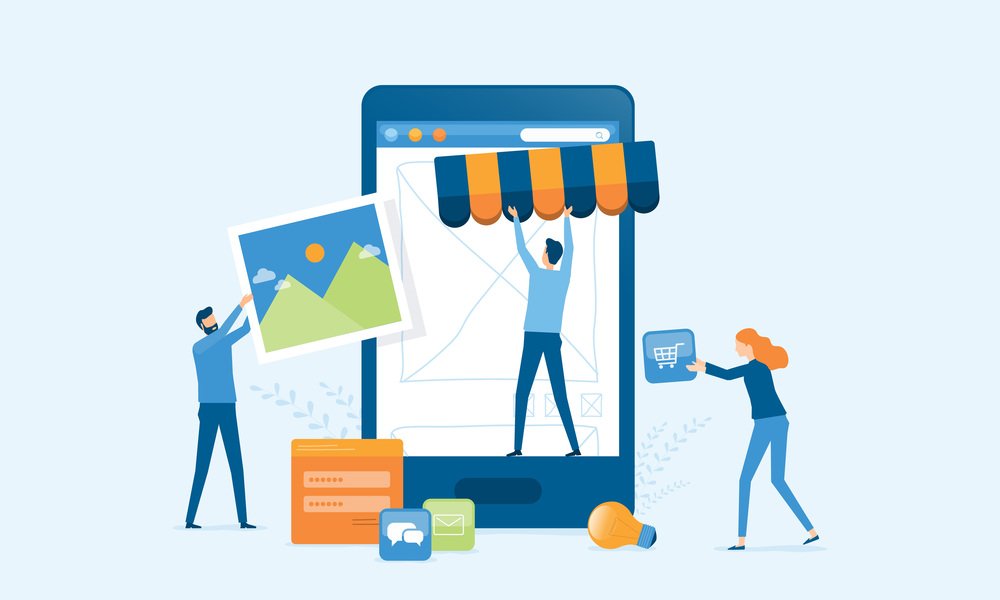Subtotal $0.00 Subtotal: $0.00
In the age of digital commerce, online shopping apps have revolutionized how people shop. They offer convenience, a vast array of products, and seamless transaction processes, making them an integral part of modern life. However, as the reliance on these apps grows, so does the importance of security in their development. Without robust protection, users are at risk of data breaches, fraud, and financial loss.
This article will explore the role of security in online shopping app development, highlighting essential practices like mobile payment security and user authentication methods that safeguard both businesses and consumers.
Why Security Matters in Online Shopping App Development
The success of any online shopping app development project depends heavily on user trust. Consumers expect their personal and financial information to remain safe when shopping online. A security breach can tarnish a company’s reputation and lead to significant financial losses.
Security also ensures compliance with legal standards like GDPR, PCI DSS, and other regional data protection regulations. These laws require app developers to implement stringent measures to protect user data, making security not just a best practice but a legal necessity.
Common Security Threats in Online Shopping Apps
Understanding the threats that affect online shopping app users is essential to building secure applications.
1. Data Breaches
Hackers often target shopping apps to steal sensitive customer data, including credit card details, addresses, and login credentials.
2. Fraudulent Transactions
Online shopping platforms become vulnerable to unauthorized transactions and payment fraud without robust verification systems.
3. Man-in-the-Middle Attacks
These attacks occur when cybercriminals intercept data transmitted between the app and its server. This allows them to access confidential information or manipulate transactions.
4. Weak Passwords and Authentication
Poor user authentication methods make it easier for attackers to gain access to accounts. Many users still rely on weak or reused passwords, which increases vulnerability.
Essential Security Features in Online Shopping App Development
To create a secure shopping platform, developers must integrate robust security features. These measures not only protect users but also ensure the app remains functional and reliable.
1. End-to-End Encryption
Encryption protects data as it travels between the user’s device and the app’s servers. Even if the data is intercepted, it prevents unauthorized access.
2. Secure Payment Gateways
Implementing trusted payment gateways is critical for mobile payment security. These gateways use advanced encryption and fraud detection tools to ensure secure transactions.
3. Multi-Factor Authentication (MFA)
By requiring multiple forms of verification, such as passwords and one-time codes, MFA adds an extra layer of protection to user accounts.
4. Regular Security Updates
Frequent updates address vulnerabilities and adapt to new threats, keeping the app secure over time.
5. Data Masking
Sensitive information like credit card numbers and CVV should be masked or tokenized to prevent exposure during transactions.
The Role of Mobile Payment Security
With the rise of mobile commerce, ensuring mobile payment security is crucial in online shopping app development. Mobile payments involve sensitive financial data, making them a prime target for cyberattacks.
Key Practices for Mobile Payment Security:
- Tokenization: Replace sensitive card information with a unique token for transactions.
- Secure Payment SDKs: Use reliable software development kits (SDKs) to handle payments securely.
- Biometric Verification: Incorporate fingerprint or facial recognition to validate transactions.
- Fraud Detection Systems: Implement AI-driven tools to identify and block fraudulent activities in real time.
User Authentication Methods for Enhanced Security
Authentication plays a vital role in ensuring that only authorized users access the app. Developers should adopt advanced user authentication methods to reduce the risk of account breaches.
Common Authentication Techniques:
- Password-Based Authentication: Require users to create strong passwords with a mix of characters.
- Biometric Authentication: Use fingerprints, facial recognition, or voice recognition for added security.
- Two-Factor Authentication (2FA): Combine a password with a second layer of security, such as a text message code or email verification.
- OAuth: Allow users to log in via third-party services like Google or Facebook, which often have robust security measures in place.
These methods protect user data and enhance the overall shopping experience by making it more secure and convenient.
Building Trust Through Secure Features
Beyond the technical aspects, security features contribute significantly to building user trust. Here’s how secure development practices foster confidence:
- Transparency: Communicate how user data is collected, stored, and used.
- Visible Security Measures: The app interface should display badges or certifications from trusted organizations, such as PCI DSS compliance.
- Responsive Support: Provide quick customer support to address security-related concerns or incidents.
Challenges in Implementing Security During Development
While integrating security into online shopping app development is essential, it comes with its own set of challenges.
1. Balancing Security and User Experience
Adding layers of security, such as MFA or frequent password updates, can sometimes make the app less user-friendly. Developers must strike a balance to ensure that security measures don’t deter users.
2. Cost of Implementation
Advanced security tools and certifications can be expensive. However, investing in these measures is far less costly than dealing with a data breach or fraud.
3. Evolving Threat Landscape
Cyber threats constantly evolve, requiring developers to stay updated with the latest security trends and practices. Regularly monitoring and updating the app is crucial to address new vulnerabilities.
Conclusion
Security is not an afterthought; it’s a cornerstone of successful online shopping app development. By prioritizing features like mobile payment security and advanced user authentication methods, developers can create safe and trustworthy platforms that cater to the needs of modern consumers.
As threats to digital commerce continue to grow, businesses must stay vigilant and proactive in implementing robust security measures. After all, a secure app not only protects user data but also fosters trust, ensuring long-term success in the competitive world of online shopping.

